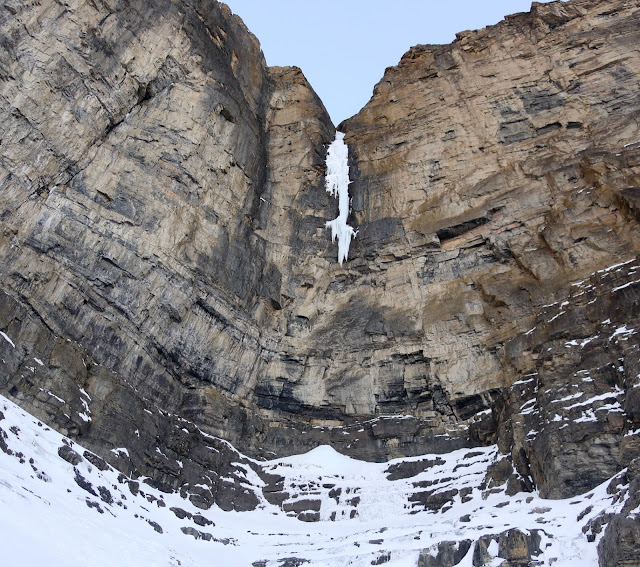Talking and climbing in Squamish
Earlier this month I spent a week in Squamish, taking in and
taking part in the Arc’teryx Academy. The event kicked off with a slide show by
Peter Croft. The adjective “legendary” is overused but it applies to Croft. I’d never seen the man in person before, and while
cragging in the Bulletheads that afternoon we kept an eye on the time so as not
to miss his show. As it was, he was already being introduced when we squelched
our way through wet grass and tried to squeeze in under the crowded awning to
escape the rain. Mixing humour with wisdom, Croft told stories of his early
days in Squamish, from false starts on Sentry Box, his first 12a, to multi-hour
soloing circuits. The soaked Chief rising above the town provided a fitting
backdrop.
My own contribution to the festival was much more prosaic,
consisting of teaching a clinic on alpine systems with Tim McAllister and a
seminar on expedition planning with Steve Swenson. What are alpine systems, you
ask? Before the clinic I asked myself the same question and tried to distil ways
of thinking and doing that have worked for me in the mountains. In a very small
nutshell, here’s what I came up with:
- Not every alpine climb is a race with shadows, but on many mountain routes you do want to get up and down reasonably quickly. As such, whatever you do should be done with an eye to efficiency.
- Faced with a stretch of terrain, you have three options: pitch it out, simul-climb it or solo it. Chances are on any big route you’ll find yourself switching between these techniques several times through the day.
- Use the terrain wisely when belaying pitches. Sometimes cutting a pitch short can be faster, if it means taking advantage of an easily gotten anchor and/or avoiding brutal rope drag.
- When simul-climbing, make sure the rope is actually protecting you. Don’t fall into the trap of being roped together if all the rope’s doing is ensuring everyone will fall together.
- Get good at retreating off of routes lacking established rappel anchors. There’s nothing as confidence inspiring when starting a big, adventurous climb as knowing you can get off of it safely and efficiently if you have to.
- In many mountain ranges, but especially in the Canadian Rockies, that means knowing how to pound pitons. When venturing off the beaten track, consider bringing a hammer and a small selection of pins. And learn how to place a pin before you need to rappel from one.
In the expedition-planning seminar, while we did talk about
the nitty-gritty of putting together an expedition to Alaska or Pakistan, we
focused on the bigger picture:
- Are expeditions for you? If what you really want is to do a bunch of climbing, you’re better off staying in your home range or going on a climbing trip to an established destination.
- Make sure you and your partner(s) have similar levels of skill, fitness, patience and risk tolerance. A mismatch in any one of these categories can make the experience a miserable one for everyone.
- Choose your objective wisely. Be ambitious but realistic. Accept that you’ll go through a learning curve and, unless you’re exceptionally lucky, probably won’t do the climb of a lifetime on your first expedition.
- Dig beneath news flashes and do some research: comb through journals, pore over maps and talk to people who’ve actually been where you want to go.
Talking about climbing is fun, but actually climbing is even more fun. And so, as soon as the talking was done, I went climbing. It being Squamish, it rained nearly every day, but I still managed to touch dry rock every single day. Below are some snapshots from what felt, to a visitor from the dry side of the mountains, like climbing in a rain forest.
The north walls, with the pale scar of the Sheriff's Badge. Conveniently, it stays dry in the rain.
Robert Rogoz, aka Polish Bob, approaches the Sheriff's Badge.
Yours truly on pitch 1 of Daily Planet, a fantastic ropelength of stems and finger locks. Photo: Robert Rogoz.
A stem provides a convenient no-hands rest before the crux, which is where it should be, right before the anchor. Unfortunately the combination of fingertip cracks and smeary feet spelt the end of my OS attempt. Photo: Robert Rogoz.
Bob shakes out as he approaches the crux...
... and liebacks the thank-god flake above it.
The second pitch starts with some squeeze-chimney action.... Photo: Robert Rogoz.
... and finishes with a surprisingly burly hand crack.
A Squamish slug epitomizes the wet coast.
Yours truly contemplates a short but cryptic route on Nightmare Rock. Photo: Laurel Fan.
Me: "I can't believe how humid it is. I'm sweating just standing around."
Laurel: "This isn't humid."
Photo: Laurel Fan.
An unusual perspective on Nightmare Rock. Photo: Laurel Fan.
The Grand Wall, the centrepiece of Squamish climbing.
Yours truly starts up the fun runouts of Mercy Me. Photo: Robert Rogoz.
Bob throws in the last few jams on the Split Pillar...
... before the obligatory last bit of squeeze chimney.
One of the cruxes of the Sword pitch is reaching up from a burly lieback and snagging the chain at the start of the bolt ladder.
Speaking of burly liebacks, yours truly happily clips the bolts on Perry's Lieback. We rappelled from the top of that pitch. I had a plane to catch at YVR, and Vancouver downtown traffic to negotiate to get there. Photo: Robert Rogoz.





















Comments
Post a Comment